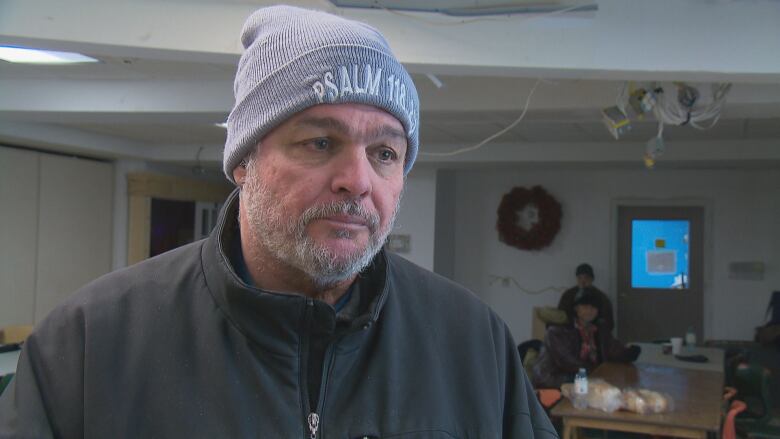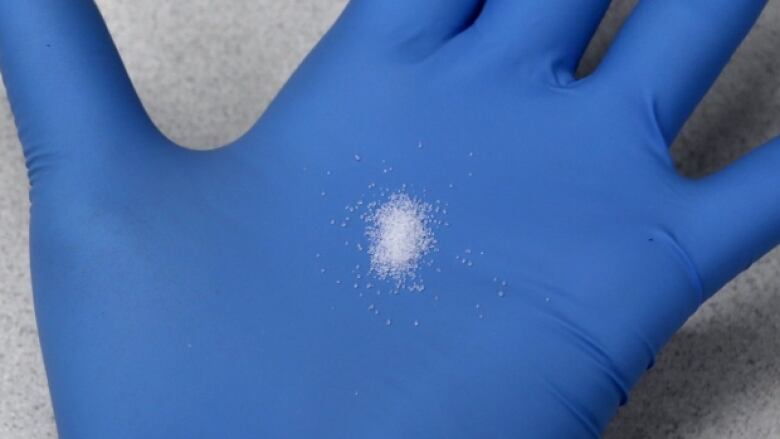Paramedics seeing surge in use of opioid overdose antidote
New report shows opioid overdose victims getting younger, using more illicit drugs

Paramedics are responding to more opioid overdoses and the victims are getting younger, according to a new government report.
Between January and the end of September, paramedics saw 114 patients respond to naloxone, an opioid overdose antidote. The total for the entire previous year was 70.
The majority of the patients treated withnaloxoneby paramedics were male. Most of the overdoses happened in theMonctonregion, followed by Saint John and thenBathurst.
- New Brunswick government to buy naloxone kits for front-line addiction workers
- Front-line addiction worker slams province's response to opioid deaths
Some of the increase in the use of naloxone could be explained by a policy changethat encourages paramedics to use the antidotemore often and in higher doses.
But the use of the antidote has climbed steadily each year, up 442 per cent overall since 2012.

"There has been no known policy or administrative changes to explain the increase from 2012 to 2015," the quarterly public health report says.
Eric Beairsto suspects the most recent uptick in naloxone use is because paramedics have more education on the antidote and are using it more liberally. The drug doesn't have any effect unless the person has taken opioids.
But Beairsto, Ambulance New Brunswick's manager of training and quality assurance, can't be sure.
"The truth is, I don't know if there's more drug out there and we're seeing more, or if it's the other thing," he said.
Younger victims
Overdose victims treated by paramedics are also trending younger this year, according to the public health report.
Forty-nine per cent of patients who overdosed from opioids, including drugs like fentanyl, dilaudid and morphine,were between the ages of 20 and 39.
For the last few months, public health officials have been trying to track fatal and non-fatal overdoses in near-real time to measure the toll of opioids.
The provincial government has also promised to buy about 2,500 naloxone kits for front-line addiction workers.
Problem 'worse than a year ago'

Cal Maskery has seen the opioid problem up close as the founder and executive director of Harvest House Atlantic in Moncton.
"It's definitely worse than a year ago," Maskery said.
Harvest House tries to have people in its shelter by 8 p.m. to reduce the number of people coming in high.
But people are coming in "sedated and intoxicated" at all hours on a regular basis.
"I've been 28 years doing this and I've never seen the level of drug use that I'm seeing today," Maskery said.
He worries about what will happen if the opioid problem continues to get worse, as it has in Western Canada. Harvest House Atlantic's recovery programs are at capacity.
The organization is trying to expand, but he said it's not happening fast enough.
"We haven't seen the worst of it yet," Maskery said.
Death toll still climbing

At least 19 people have died from overdoses related to illicit and prescribedopioids so far this year, including five deaths tied to fentanyl.
The death toll is certain to climb, the report says, because it can take months for the coroner's office to determine how someone died.
The coroner's office is still investigating deaths from 2016, when at least 32 people died from overdoses related to opioids.
The report doesn't mention any deaths due to carfentanil, a drug that's estimated to be more 100 times more powerful than fentanyl.
Public Health officials issued a warning about carfentanil in November, saying it was involved in an overdose death somewhere in southern New Brunswick.
Carfentanil is a synthetic opioid originally designed to sedate elephants.
More illicit opioids

The report also shows that illicit opioids are now killing more people than prescribed painkillers, a shift from past trends.
Of the five people confirmed to have died from illicit opioids so far this year, all were under the age of 40.
After opioids, benzodiazepines including anxiety medication like Klonopin and Ativan were the most common drugs involved in accidental overdose deaths since 2016, according to coroner's data obtained through freedom of information.
Methamphetamines and antidepressants were the next most common drugs detected, followed by cocaine.
Nearly all overdoses involved more than one drug.
Across Canada, the death toll from opioids is projected to surpass 4,000 by the end of this year,far higher than last year's total of 2,862 opioid-related deaths.
With files from Tori Weldon












_(720p).jpg)


 OFFICIAL HD MUSIC VIDEO.jpg)
.jpg)



























































































